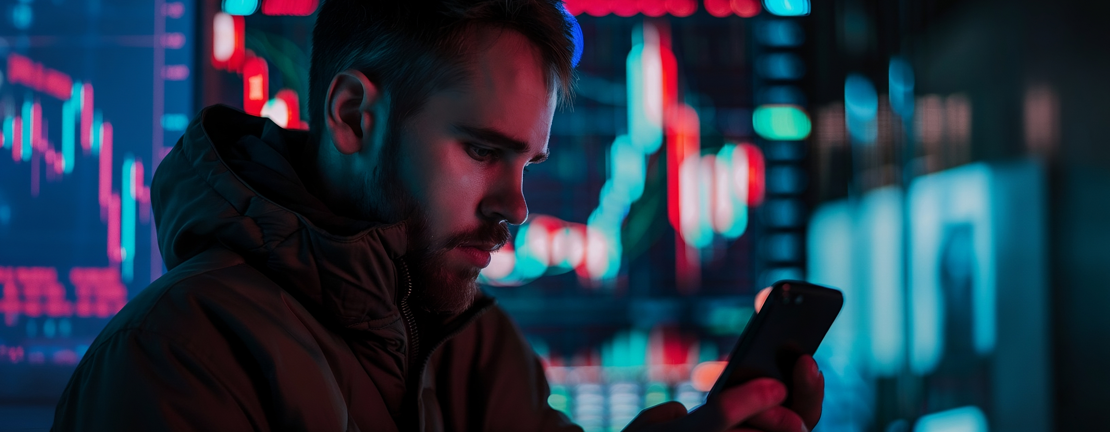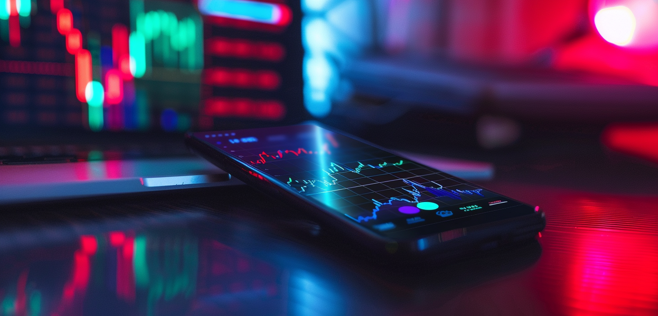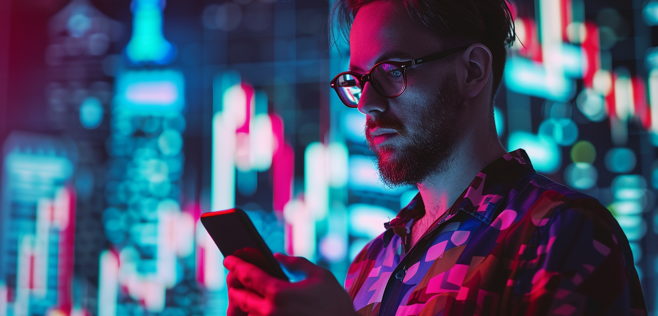Published 08 Oct 2025
Crypto Trading Groups: AI Signals vs Telegram Channels. 2025 Guide

Modern crypto trading groups have reshaped how investors navigate the fast-moving cryptocurrency market. Automated systems now analyze and execute trades in milliseconds, offering precision and speed that no human can match.
At the same time, thousands of traders still rely on Telegram signal channels, where experienced analysts share real-time insights and market calls based on their expertise. Both approaches represent two different worlds — algorithmic precision and human intuition.
Choosing between them depends on what a trader values more: automation and consistency, or flexibility and understanding. This guide explores how AI-powered trading signals compare to traditional Telegram groups.
It examines their strengths, weaknesses, and use cases — helping traders decide which method, or combination of both, fits their strategy best in 2025 and beyond.
How Crypto Trading Signals Work
Crypto trading signals act as navigation tools in a market driven by volatility and emotion. They provide structured guidance — showing traders where to enter or exit positions, and helping them make decisions based on data rather than impulse.
A typical signal includes four main parts:
- the asset to trade,
- a suggested entry range,
- take-profit levels,
- and a stop-loss for protection.
For example, a signal might say:
- Buy: Ethereum (ETH/USDT)
- Entry: $3,200–$3,250
- Take-Profit: $3,350 / $3,450 / $3,600
- Stop-Loss: $3,100
- Reason: bullish momentum after a technical breakout
Traders usually receive these alerts through platforms like Telegram, Discord, or specialized apps. The instant delivery allows them to act quickly and discuss strategies with other members of the same community.
Signal groups exist because many investors lack time or technical knowledge to analyze markets themselves. They save hours of chart study, reduce emotional trading mistakes, and provide a structured framework that improves discipline and timing.
Some traders treat them as a second opinion, while others use them as an educational resource — learning professional logic behind each market move.

Types of Signals: Manual vs Automated
Crypto trading signals fall into two main categories — manual and automated. Each type has its own logic, advantages, and trade-offs.
Manual signals come from human analysts. They combine technical indicators, fundamental data, and personal experience to form trading ideas. Because they’re driven by human judgment, these signals can adapt quickly to breaking news or sudden shifts in market sentiment. Analysts can weigh multiple factors at once — from chart patterns and on-chain data to macroeconomic trends.
However, human input also introduces emotional bias and slower reaction times. Manual signal groups depend on the analyst’s schedule and may miss opportunities that appear within seconds.
Automated signals, on the other hand, come from algorithms and AI systems. These programs constantly scan markets, identify repeating patterns, and send alerts when predefined conditions are met. They follow strict rules without emotion, making them consistent and efficient even during high volatility.
Their main weakness lies in context. Algorithms can misinterpret unpredictable events — like sudden regulatory changes or exchange incidents — because they rely on past data. They execute logic perfectly but lack intuition.
In short, manual signals offer insight and flexibility; automated signals offer speed and discipline. Successful traders often explore both to find the right balance between human reasoning and machine precision.
AI Signal Groups: Strengths and Weaknesses
AI-powered trading systems have transformed how traders read and react to market data. They monitor conditions around the clock, analyze thousands of assets in real time, and generate signals faster than any human analyst could. This constant activity gives them a major edge in markets that move every second.
24/7 Automation and Speed
Unlike human traders, AI systems never rest. They track market depth, volume, and price action simultaneously across multiple exchanges. When a pattern matches a predefined strategy, the system reacts instantly — often within milliseconds. This continuous monitoring helps traders capture opportunities that might disappear in moments.
Emotion-Free Decision Making
One of the strongest advantages of AI signal groups is the removal of emotional influence. Where humans often react with fear or greed, algorithms stick to data-driven logic. This consistency keeps trading disciplined, especially during periods of extreme volatility. Well-configured systems follow rules precisely, regardless of market sentiment or panic.
Limitations in Unpredictable Markets
Despite their speed, AI tools face clear limits. They depend heavily on historical data and can struggle with unexpected events — such as sudden regulation changes or market manipulation. When conditions shift beyond their training data, these systems may issue false or outdated signals. Poor configuration or bad data inputs can also amplify losses instead of preventing them.
The Transparency Problem
Many AI-driven trading tools operate like “black boxes”. They send alerts but rarely explain why a specific trade makes sense. This lack of transparency can create trust issues. Traders may hesitate to follow recommendations they don’t fully understand or cannot verify.
For that reason, AI signal groups work best when treated as analytical assistants — not as fully autonomous systems. They provide data clarity and speed, but human judgment is still needed to interpret the bigger picture.

Telegram Signal Channels: Pros and Pitfalls
Telegram remains one of the most active hubs for human-led crypto signal groups. Unlike automated systems, these communities rely on experienced analysts who interpret charts, news, and market sentiment in real time. Their approach blends technical and emotional awareness — something algorithms often miss.
Human Insight and Real-Time Context
In Telegram groups, signals usually come with full explanations: entry and exit points, stop-loss levels, and reasoning behind the call. Subscribers can see how professionals think, not just what they trade. This educational aspect helps newcomers understand why certain patterns matter or how fundamentals shape short-term moves. Since traders can react immediately to new posts, the human element allows flexibility that automated bots can’t match.
Community Learning and Support
Telegram channels often evolve into learning environments. Members discuss strategies, share opinions, and ask questions directly to signal providers. This sense of community builds collective confidence and helps traders grow through shared experience. Many groups complement signals with short lessons or market reviews, turning them into informal trading classrooms.
Risks and Manipulation
The open nature of Telegram also attracts less trustworthy actors. Some groups exaggerate success rates or promise unrealistic profits to gain subscribers. Pump-and-dump schemes occasionally appear, coordinated to inflate low-volume tokens before offloading them onto unaware followers. Because there’s little oversight, traders must verify every source, check credibility, and treat all signals with caution.
Manual Execution and Timing
Following human-led signals means acting quickly on new messages. Traders must open positions manually, which can lead to missed entries or inconsistent results if they’re not online. Signals are also general, not customized for each user’s capital or risk profile, so traders need to adapt them individually.
In short, Telegram channels provide education, context, and connection — but demand active attention and critical thinking. They work best for those who value human explanation and community learning over full automation.
AI vs Telegram: Feature-by-Feature Comparison
AI-driven systems and Telegram signal groups aim for the same goal — helping traders make better decisions — but they achieve it in very different ways. Each offers clear strengths and trade-offs across the areas that matter most: speed, flexibility, risk control, and transparency.
Execution Speed and Accuracy
AI systems operate at machine speed. Once conditions match a predefined rule, trades can execute in under a second, removing delay and emotion. Telegram signals, by contrast, require manual action. Even the best traders need a few moments to respond, which can affect results when prices move quickly. Still, skilled human analysts sometimes outperform algorithms by interpreting context that code can’t capture.
Customization and Flexibility
AI tools often let users adjust position size, stop-loss, and take-profit settings automatically. They can also pause or reverse trades based on performance rules. Telegram groups provide flexibility of a different kind — traders can interpret the analyst’s reasoning and modify the idea to fit their own risk tolerance. This educational freedom makes human-led signals more adaptable for learning and strategy development.
Risk Management and Automation
Advanced AI platforms include built-in safeguards such as daily limits or automated trailing stops that protect capital without user input. Telegram channels suggest risk levels but can’t enforce them. Traders must manage exposure manually, which takes more effort but helps them understand risk in real-world conditions.
Platform Compatibility and Access
AI systems typically integrate directly with trading software or exchanges, making execution seamless. Telegram signals, on the other hand, work universally — anyone can follow them on any platform. This accessibility makes them beginner-friendly, though it requires constant attention.
Transparency and Trust
Human-led signals win on transparency. Analysts explain why they make each call, allowing followers to question, learn, and build trust. AI systems can feel opaque — they show results but rarely explain the logic behind them. Traders often balance the two by using AI for speed and Telegram groups for understanding.
Both methods can deliver results when used wisely. Success depends less on the tool and more on how traders combine automation with human insight.

Choosing the Right Signal Group for You
The choice between AI-driven platforms and human-led Telegram groups depends on a trader’s goals, experience, and daily routine. Each approach offers different strengths that can fit distinct trading styles.
For Beginners
AI signals can help newcomers by providing structure and consistency. Automated systems remove the need for deep technical knowledge and enforce discipline through predefined rules. This makes them useful for learning risk control and avoiding emotional decisions.
Telegram channels, however, teach differently. They explain why trades are made, encourage interaction, and allow new traders to learn from human reasoning. For beginners focused on understanding market logic, human-led groups offer valuable insights that AI can’t explain.
Combining Both Approaches
Many traders find that using both systems together gives the best results. AI handles constant monitoring, fast execution, and emotion-free trading. Telegram groups supply market interpretation, context, and ongoing education. Together, they balance automation with understanding — letting traders act quickly without losing perspective.
Evaluating Paid Signal Services
Before paying for any signal source, it’s wise to check:
- Transparency — do they explain their methods clearly?
- Track record — are results verifiable, not just claimed?
- Frequency — how often signals are sent and how realistic that pace is.
- Risk tools — do they include stop-loss guidance or capital limits?
- Pricing — does the cost align with your trading volume and goals?
Testing Before Committing
Good providers usually offer trial periods or free versions. Use them to measure accuracy and delivery speed before investing. Avoid groups that guarantee profits or use pressure tactics to sell subscriptions. Performance in real conditions will reveal more than any marketing claim.
Ultimately, no signal group can replace personal responsibility. Both AI systems and Telegram channels can support better trading — but they work best as tools, not shortcuts. The most successful traders treat them as aids to their own analysis, not as automatic profit machines.

Conclusion
Crypto trading signals continue to evolve as technology and markets advance. AI-driven systems bring unmatched speed, consistency, and emotion-free execution. They scan markets nonstop, follow strict logic, and react instantly — a perfect fit for traders who value discipline and automation.
Telegram channels, in contrast, offer a human dimension that algorithms can’t replicate. They explain the reasoning behind each move, build communities of shared learning, and give traders the chance to grow through experience. This personal interaction turns trading from a mechanical process into an educational one.
The best choice depends on purpose. AI signals suit traders who want efficiency and structure. Telegram groups serve those who want context, mentorship, and flexibility. Used together, they complement each other — AI provides precision, and human-led communities deliver understanding.
No system guarantees profit. Markets remain unpredictable, and every signal, automated or manual, carries risk. Success comes from treating signals as tools for guidance, combining them with personal research, clear risk management, and continuous learning.
The future of crypto trading will likely merge both paths — intelligent automation guided by informed human oversight. That balance between machine logic and human judgment is where sustainable success will grow.
Read More




 Get RateX Pro
Get RateX Pro

 06 Jun 2024
06 Jun 2024
